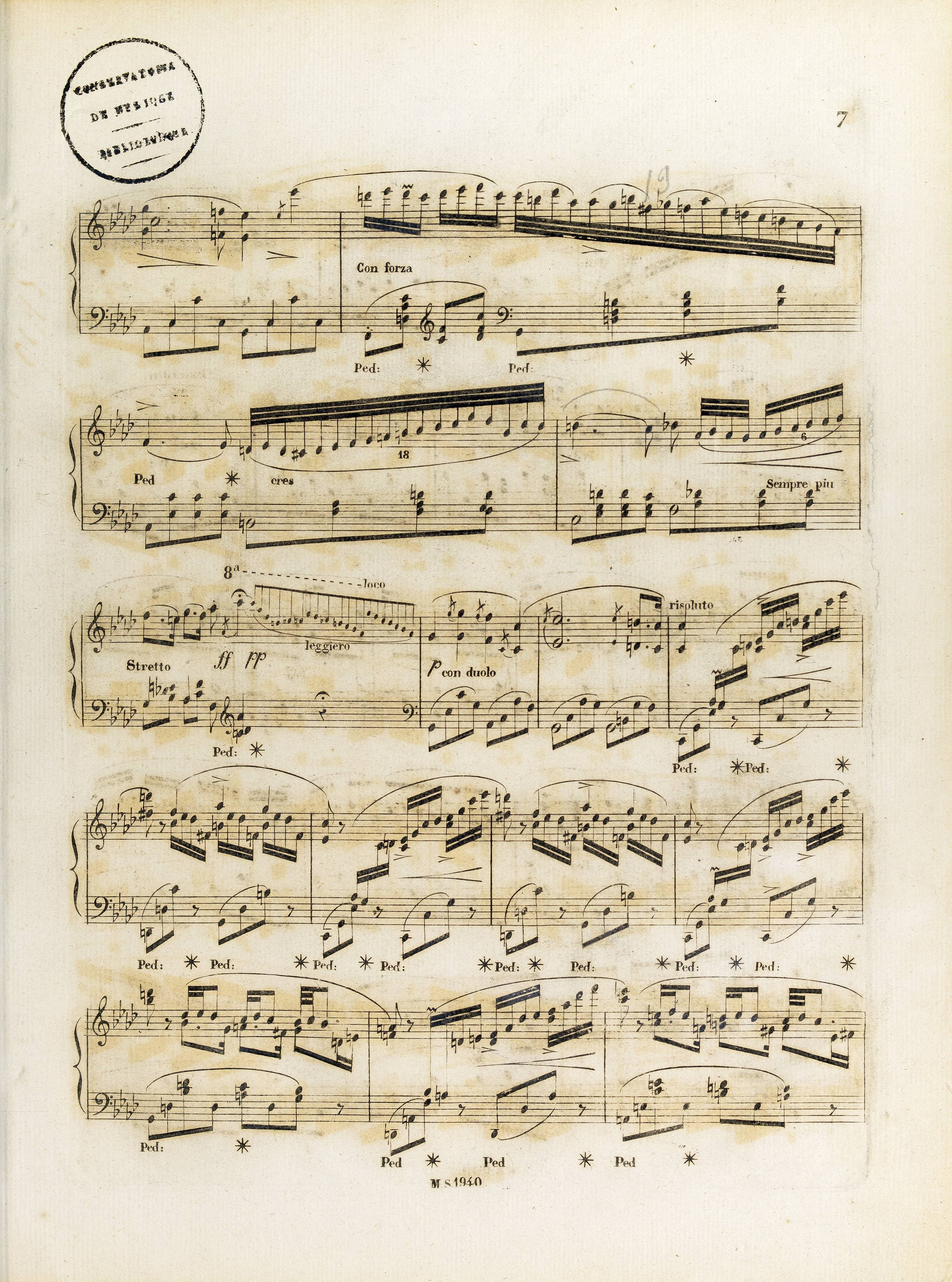Op. 2, Variations in B♭ major
Op. 10, 12 Etudes
Op. 11, Concerto in E minor
Op. 21, Concerto in F minor
Op. 22, Polonaise in E♭ major
Op. 24, 4 Mazurkas
Op. 25, 12 Etudes
Op. 26, 2 Polonaises
Op. 27, 2 Nocturnes
Op. 28, 24 Preludes
Op. 30, 4 Mazurkas
Op. 35, Sonata in B♭ minor
Op. 50, 3 Mazurkas
Op. 63, 3 Mazurkas
Op. 64, 3 Waltzes
(Op. 4), Sonata in C minor




Op. 21, Concerto in F minor, Mvt I
Even if we consider the sign of A to be  , the editions reproduced it inaccurately, extending it until the 4th quaver. However, the sign in A is almost certainly a long accent – cf. a sign of the same length on the last crotchet as well as a number of others, e.g. in bars 118-120, 125, 133.
, the editions reproduced it inaccurately, extending it until the 4th quaver. However, the sign in A is almost certainly a long accent – cf. a sign of the same length on the last crotchet as well as a number of others, e.g. in bars 118-120, 125, 133.
Compare the passage in the sources »
category imprint: Graphic ambiguousness; Differences between sources
issues: Long accents, Inaccuracies in GE
notation: Articulation, Accents, Hairpins



